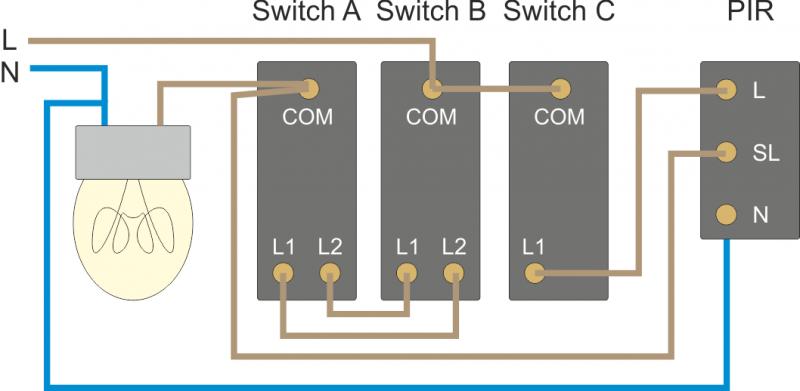Humble apologies if this has been covered before ...
I'd like to install a PIR outside to turn on my kitchen lights - instead of an outside lamp - using an override switch (i.e so I can use kitchen lights normally or have them controlled by the PIR when we're out). My initial thoughts are that I could break the switched live feed to the kitchen lights (5 x 50w hallies) with a junction box and bring it to a switch on the kitchen's outside wall, the other side of which would be the PIR. However, I've been trying to figure out a feasible 2-way switch configuration ....
Is there one? Or am I underestimating the complexity of the task? I also realise that this method would require the kitchen lights to be on for the override to work ... which would be ugly.
Any thoughts / help / humourous derision would be most welcome
Thanks
I'd like to install a PIR outside to turn on my kitchen lights - instead of an outside lamp - using an override switch (i.e so I can use kitchen lights normally or have them controlled by the PIR when we're out). My initial thoughts are that I could break the switched live feed to the kitchen lights (5 x 50w hallies) with a junction box and bring it to a switch on the kitchen's outside wall, the other side of which would be the PIR. However, I've been trying to figure out a feasible 2-way switch configuration ....
Is there one? Or am I underestimating the complexity of the task? I also realise that this method would require the kitchen lights to be on for the override to work ... which would be ugly.
Any thoughts / help / humourous derision would be most welcome
Thanks



